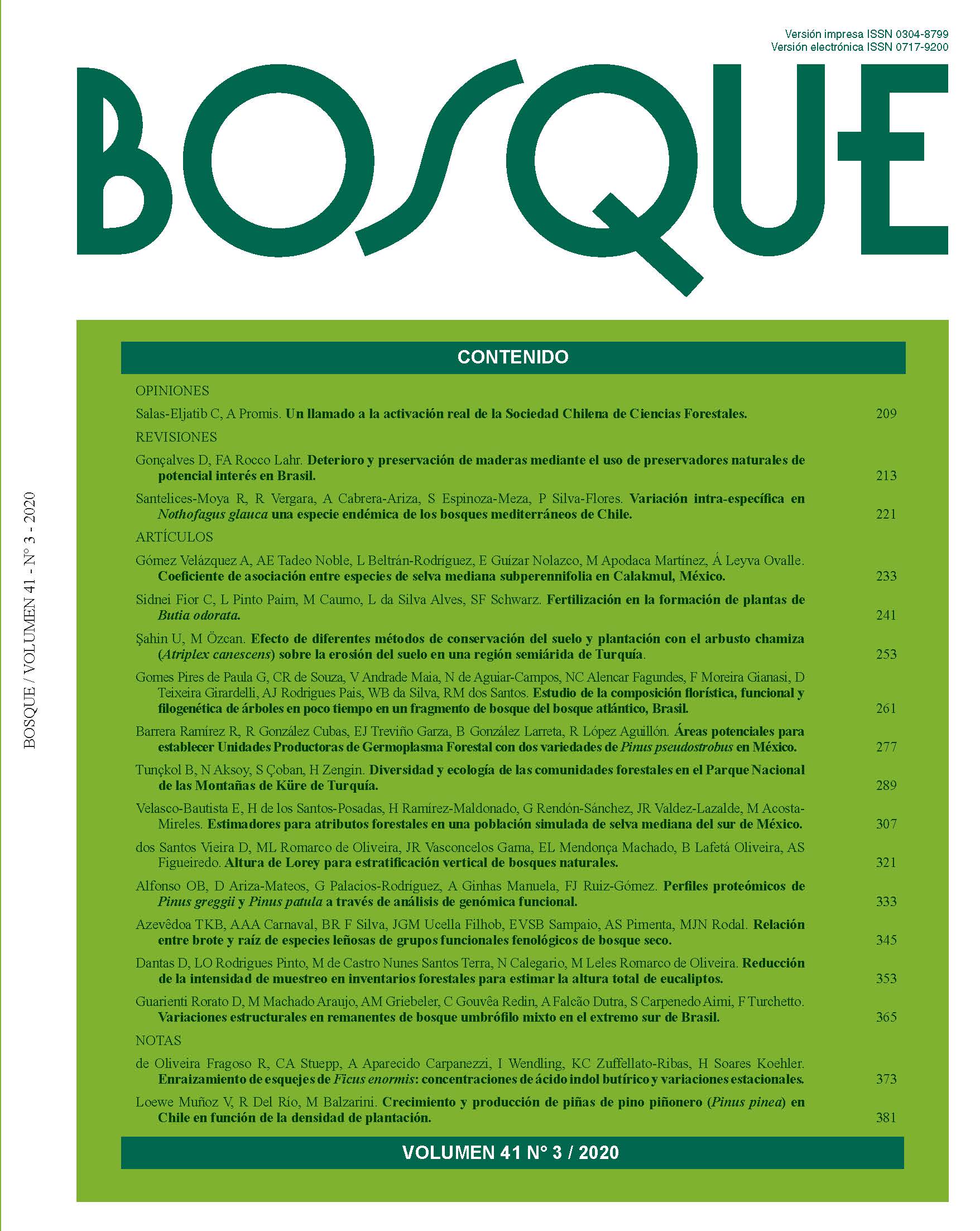Relación entre brote y raíz de especies leñosas de grupos funcionales fenológicos de bosque seco
Contenido principal del artículo
Resumen
La disponibilidad de agua en ambientes áridos y semiáridos es el factor ambiental más limitante para el desarrollo de las plantas, las que utilizan diferentes mecanismos para captar agua del suelo. El objetivo de este trabajo fue evaluar si existe una asignación diferencial de recursos entre raíz y brote de especies leñosas del bosque seco brasileño y su relación con los grupos funcionales fenológicos de leñosas adultas conocidas: perennifolias (EG), especies leñosas caducas de alta densidad (DHDW) y especies leñosas caducifolias de baja densidad (DLDW). El experimento se realizó en invernadero durante seis meses, con dos tratamientos: riego controlado (IC) y riego abundante (IA). Los resultados mostraron que no hubo interacción entre los grupos fenológicos y los tratamientos aplicados. Sin embargo, IA presentó valores de biomasa total superiores a IC. La biomasa de raíces finas fue la única variable que no difirió entre IA e IC. Las plantas DLDW tuvieron una relación raíz: brote mayor em comparación con DHDW y EG. El DLDW presentó una estrategia diferenciada, siendo un factor indicativo de estos grupos la biomasa radical alta gruesa, seguida de la biomasa radical fina baja, con menor proporción de biomasa foliar, y mayor biomasa total. Los resultados muestran que CI reduce el desarrollo de plántulas en los grupos y luego invierten en biomasa de raíces finas. La especie DLDW presentó mayor inversión en biomasa radical que brote, además de mayores valores de biomasa total y área foliar específica.

